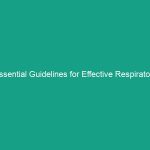Introduction
Good morning team,
Today, we’re going to talk about an important topic that affects many of us in the workplace: repetitive motion injuries. It’s essential to understand how these injuries can impact not only our health but also our productivity and overall Workplace Safety. By the end of this Toolbox Talk, you will be equipped with must-know guidelines to prevent these injuries and promote a safer, healthier work Environment.
Understanding Repetitive Motion Injuries
Repetitive motion injuries (RMIs) occur when the same motion is performed repeatedly over time, leading to strain on muscles, tendons, and nerves. Common examples include carpal tunnel syndrome, tendonitis, and bursitis. These injuries can significantly hinder our daily operations, resulting in pain and decreased work efficiency.
It’s a common misconception that only manual labor jobs are at risk for RMIs. However, any job that requires repetitive movements—like typing, using a mouse, or assembling items—can lead to these injuries. Understanding how RMIs develop is the first step in Prevention.
Key Hazards, Risks, and Safety Considerations
Several specific Hazards and risks are associated with repetitive motion injuries:
- Prolonged Posture: Holding the same position for extended periods can lead to muscle fatigue.
- Poor Ergonomics: Improper workstation setup can strain muscles and joints.
- Insufficient Breaks: Failing to take regular breaks can exacerbate fatigue and discomfort.
- Heavy Lifting: Even tasks that may not seem repetitive can cause strain if not performed correctly.
Ignoring these hazards can lead to severe consequences, including long-term disabilities and increased healthcare costs. It’s crucial that we take preventive measures to protect ourselves.
Best Practices, Procedures, & Actionable Advice
Here are some Best Practices that can help prevent repetitive motion injuries:
- Ergonomic Workstation Setup: Ensure your workstation is adjusted to suit your body. Your monitor should be at eye level, your chair should support your lower back, and your keyboard should be positioned so your wrists are straight.
- Take Frequent Breaks: Schedule short breaks every hour to stretch and relax your muscles. Stand up, walk around, and do some light stretching to reduce tension.
- Vary Your Tasks: If possible, rotate tasks with coworkers to reduce the repetitive strain on specific muscle groups.
- Use Proper Techniques: When lifting, bend your knees and keep your back straight. Avoid twisting your body while lifting.
- Wear Supportive Gear: If your job requires prolonged standing or specific repetitive motions, consider using ergonomic tools or supportive braces.
For example, a recent case involved an employee who developed carpal tunnel syndrome from excessive typing without proper breaks. After implementing scheduled breaks and adjusting their keyboard height, they experienced significant improvement.
Regulations, Standards, and Compliance
Adhering to Safety Regulations is critical in preventing repetitive motion injuries. The Occupational Safety and Health Administration (OSHA) provides guidelines that help employers minimize risks associated with RMIs. These include:
- Ensuring ergonomic workstations.
- Conducting regular safety audits to identify risks.
- Providing Training programs on safe work practices.
Compliance with these Standards not only protects employees but also helps organizations avoid legal repercussions and decrease healthcare costs associated with workplace injuries.
Employee Engagement & Discussion
Now that we’ve covered the guidelines, let’s open the floor for discussion. Think about your daily tasks:
- What safety challenges have you encountered related to repetitive motions?
- Have you noticed any ergonomic issues in your workspace?
- What changes could we implement to make our work environment safer?
Your insights are invaluable in creating a safer workplace. Let’s work together to identify any concerns and solutions.
Conclusion & Key Takeaways
In conclusion, preventing repetitive motion injuries is a shared responsibility that requires awareness and proactive measures. Remember the key points we discussed today:
- Understand the risks associated with repetitive motions.
- Implement ergonomic practices in your workspace.
- Take regular breaks to rest and stretch your muscles.
- Stay informed about Workplace Safety regulations.
By prioritizing these practices, we can create a healthier and safer work environment for everyone. Thank you for your attention and commitment to safety!


